Queering spaces
“Queering spaces”
The idea of this term is the way to go against any restrictions, being directed by any higher group of people. To be different. To acknowledge and be aware of the facts. To feels these sense of rule.
What is exactly happening around us? In a public space, am I free to do whatever? What does it mean to be in a public space? How are people directed, and are they aware of it? To observe these facts, we see what we never have seen before.
Looking for busy places where people come and go into/from every direction. in these kind of places there’s a sense of guidence. Directing people to walk a certain way.
Train station_Do they walk alone? Do they stay in the same place? Do they only move form on to another? What do they have with them? What is their destination?
First Observations
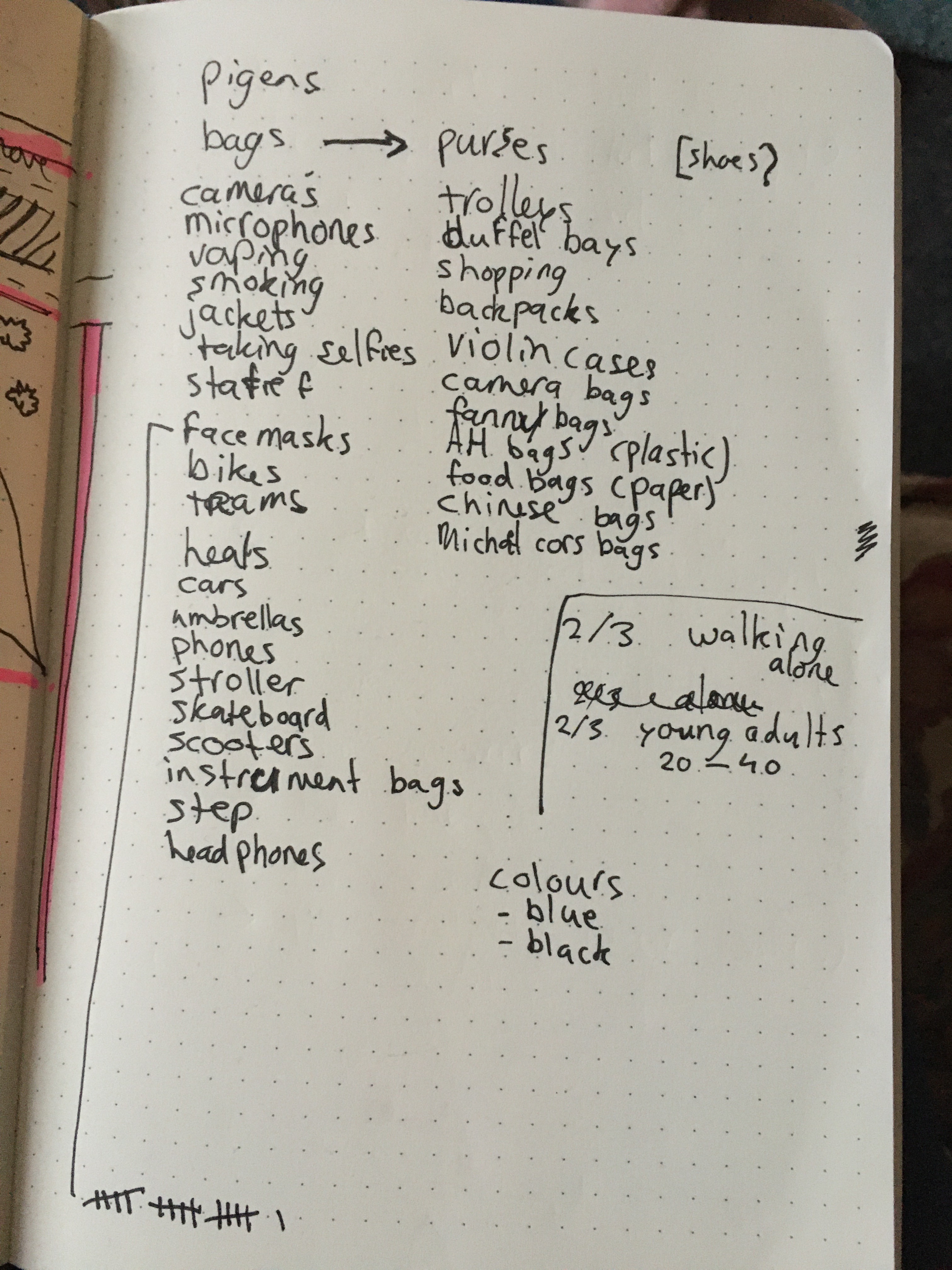
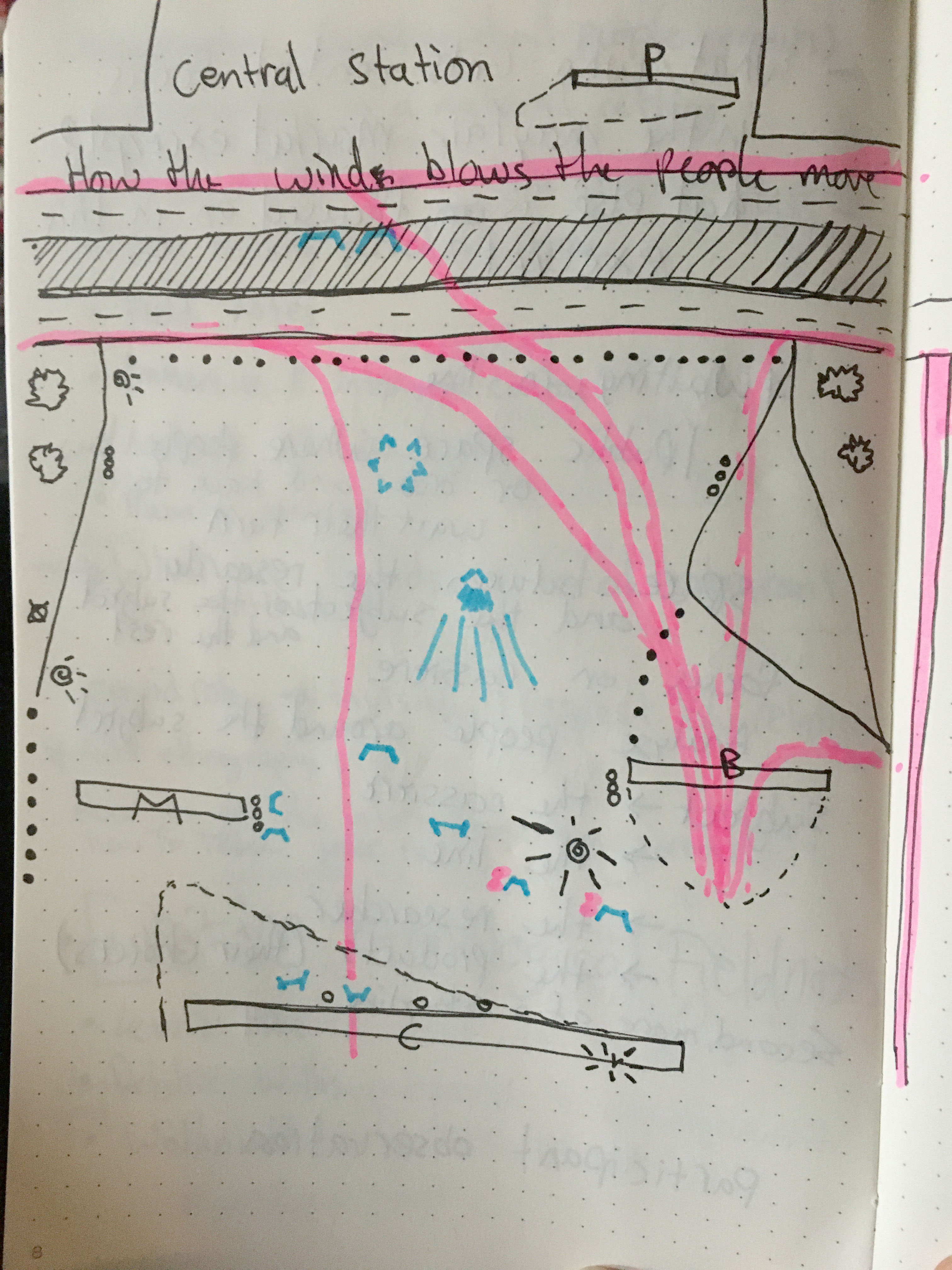
For this research I am intrerested in the social part of the central station. So I looked out for the setting of the place and wrote down all the different objects I found that people carry. I can't know exactly what a person does or what a person defines with from just their looks. But based on what they carry, and to guess their age, I can assume what kind of people are around. Of course the central station is a place of travel, so people around carry luggage. The square in front also shows that this central place is a place of meetings. The square is often used by reporters and journalists, sales persons that try to find customers for a charity or else, Johova people trying to teach people about their faith.
At the same time I see this space as an entrance to the city. Obviously it is, because the space is centrally located. From the train station platforms you walk through the hall to the main exit, you enter the square that's an open area to find the next public transport to the rest of the city. Or you walk straight forward to the main street with a park and a relaxing area where people socially come together
Reaction to the observation
Body movements at the main square. Th space is broad and there's a lot of space. Which is necessary for the travellers trying to change from the one transportation to the other. Or coming from the bike/car and getting to the transportation that will bring them to further places.
I like the fact that this space is also an open space to relax, enjoy the sun with a cup of coffee from the best coffeeshop of the central station. Or even to write or make drawings. Many people also stand still and take pictures, probably these people are visiting the city.
History of the space
Since 1955 the central train station of Rotterdam has taken it's spot at the location that it still is today. A central spot where train-bus-tram gather. The station was since then a great gathering place thanks to it's efficient functionality.
In 1987 a pastor of the Paulus church in Rotterdam started an organisation to help out the junks of the city. During that time the junks were a real problem in the city, walking in the middle of the street using, creating issues with others.
The pastor created an area right next to the central station calling it "perron nul" translated; "platform zero". The junks gathered in this place where they find support from the pastor and his team of volunteers. The organisation was going well, in the city the police noted less incidents in the streets and many junks were getting the help they needed at this "perron nul".
Years later this area became very popular for junks from all over the country and even outside the country people were gathering here to get the best drugs. Incidents happened in the space, the groups became too big and too hard to handle. After one group fight between Marine men and the junks, the city decided that the space has to be taken down. In 1994 "perron nul" was officially destroyed.
Shortly after this happening the central station was starting construction. There came this building of blue blocks and yellow fences that was trying to maintain the travel spot of the city. Next to it the central square was taken down to make place for the central station we know nowadays.
The plan to build the central station that we know now in 2020 was a huge project to comprehend. The goal was to officially open the central station in 2011. Eventually after many delays, the central station was officially opened in 2014 by our King Willem-Alexander. To prepare the city for the future of travel, this station needed the capacity to have up to 320.000 travellers in a day, this is an amount predicted for the year of 2025. This project had a budget of 300 million euro's. Because of complications and delays the final amount of money spent on this building got up to 600 million euro's.
"maar de Rotterdammers hebben het er voor over, want dit gaat zich uiteindelijk uitbetalen in het ontstaan van duizenden banen in deze omgeving." - burgemeester Aboutaleb
"The Rotterdam residents don't mind the amount of money put into this, because this investment will result itself with a load of new jobs for the city." - mayor Aboutaleb
Links to artikels (though most of them are Dutch)
“Centrale ontmoetingsplek”
“Het station, voorheen een barrière in de stad, vormt nu een belangrijke verbindende schakel in het stedelijk weefsel.”
“Rotterdam’s urbanity is reinforced here by a metropolitan station architecture in which the building and the new station square merge. Here the station roof folds to create a welcoming and very spacious station concourse, which also provides direct access to the new metro station”
“Dit is een moment waar veel mensen naar hebben uitgekeken,”
“Museum Rotterdam duikt in historie Perron Nul: ‘Ten onder aan eigen succes’”
Mapping the space
1.
The entrance of the trainstation. People with luggage in any colour and size go in and out. Just at the door there are smoking area’s. People stand by it and look around.
In front of the entrance people are waiting wiith a bike or standing to wait for someone to arrive.
2.
A small ally where people transfer from the tram to the metro or from the metro to the train or tram. It;’s a place of transit, but people in front are sitting around waiting and enjoying the weather, taking some time.
The people in this space that I see are recognised as probably students, employees that work in the city. So young adults and Adults.
3.
An open space, where people meet. It’s an unique thing that students or young workers using this space to talk to new people and discuss a topic with them. On the other hand half of the people are busy with their devices, camera’s microphones, headphones. In their own world I would say.
1.
A space where the bodies have a destination and make sure to get to that destination. It is not a meeting place. It is indeed a space to buy a coffee or a snack and sit in the middle *away from the walking space. People look towards their direction and not anything else.
2.
People coming from the east entrance are more hesitant to enter the trainstation right away. More people look around first and see where they can find what they are looking for. Mostly tourists com from this entrance from the tram.
3.
The small space between the metro and train gate. This space is no joke, you cannot stand around and look around, this is only for people in transit to catch their next transport.
4.
A hall where there is space to look around the entrance hall, make some music, meet people, have a coffee. This is a more calm space.
5.
Coming from the bus people use this entrance to get to their train as fast as possible.
To enter the train platforms there’s a gate. The gate requires a scanning card that is the key to the gate. The card also requires a price of 20 euro’s. At this very spot I recognise a lot of people in office clothes, backpacks, laptop cases, or travellers with a suitcase.
The majority of the people that enter are white people. of a young age, 20-40.
Would the price of entrance hold back other social groups to enter, and use the train to travel?

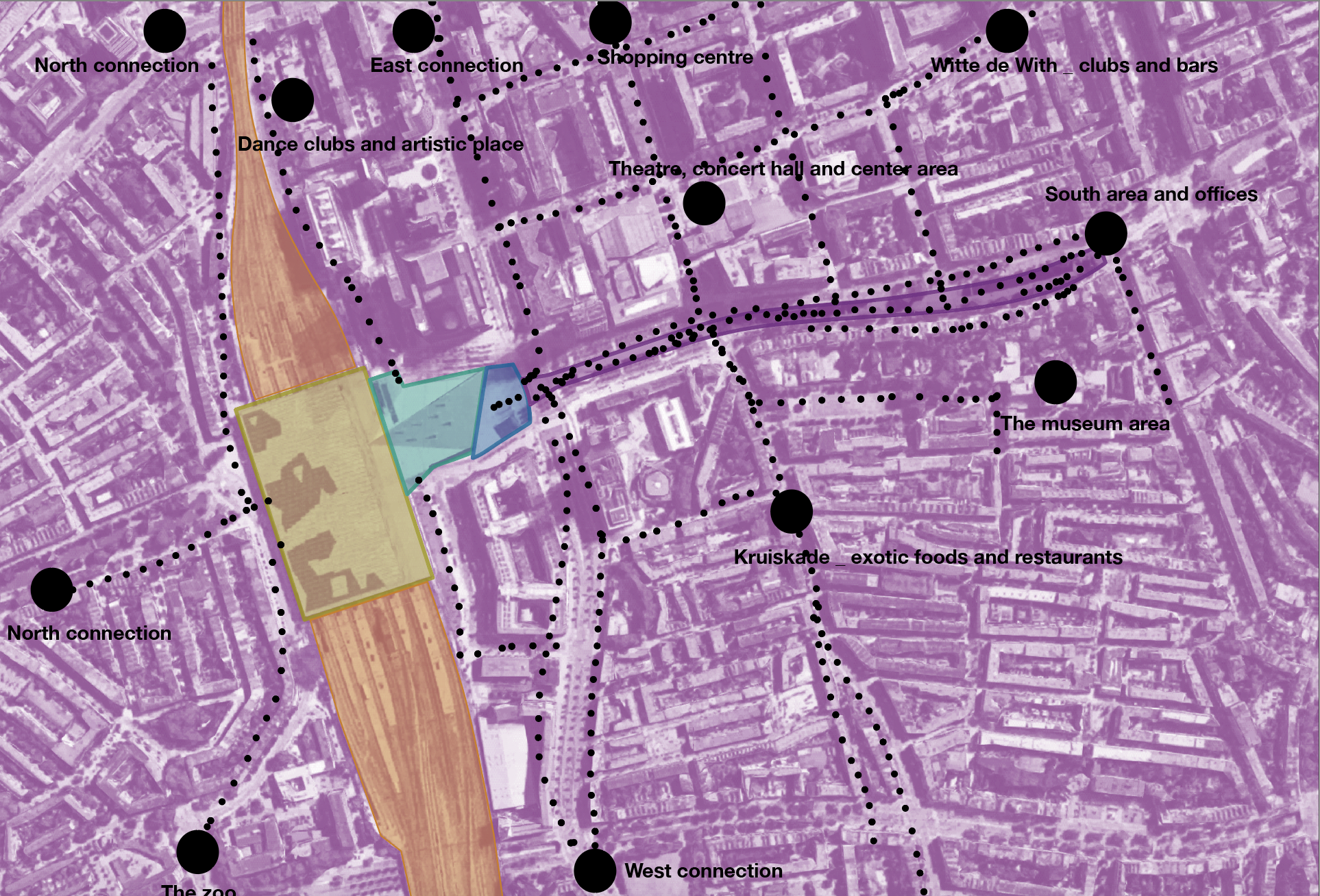
Analysing the wider context of the central station, it shows me how much this place is centred in the city. It’s ideal for tourists visiting the city through public transport. There is a direct train from Schiphol to this city, and as soon as they get off the train they enter the city of Rotterdam. For tourists it’s very easy to make their way through tyhe city from the central station.
Look at the purple area on the map* This area is a space where people sit, they meet, they enjoy the sun, it’s sort of a relaxing place in between the hectic of the city traffic. There’s space for nature, a nice view of the architecture of the street. This main road leads everyone to the central station of Rotterdam. I like how there is a calm space front of the central station where people meet.
This leaves me with a question. The main groups that visit the central station are business people coming from the offices, students from any academy carrying their luggage and tourists with trollies.
Does the central station exclude any social group of people?
It certainly does! I see nobody in workclothes, with uniforms for example, none of them.
I see that the central station of Rotterdam is so new and well organised, built in a modern design and a fancy interiour. That I don’t see people hanging around the area looking for help. For example in different Train stations I find more homeless people hanging around the station. Specially in trainstations I’ve seen in Italy for example, or the older trainstation of Rotterdam in the south for example. These stations allow more people from lower class jobs, peopel working in the harbour, or at stores.
Walking inside the stations and seeying the prices from all the shops that provide the travellers with food and to shop if they are bored...
Is this the modern way of the city? Buying Buying, spending more money, only providing access for higher class workers. In any way possible gaining money from visitors even in public toilets.
I want to investigate better in the broader place around the train station. My conclusion is not clear yet and I want to provide more information from interviews and deeper research in the history of the place.
More research
"Does the station exclude any social groups of Rotterdam? "
Research question:
Theory research >>>>>>>>>>
"The mystery of platform 5& 10" - Indebuurt
"The station should fulfill the role of the city square. If it’s a destination in its own right, it will be a place of connection rather than separation." - Jan Benthem
"Perron 0 was veel Rotterdammers een doorn in het oog. Het project van dominee Visser begon in 1987 als een opvangplek en dagbesteding voor drugsverslaafden. Maar de aanloop was zo groot, dat de overlast van Perron 0 ook steeds groter werd." -Rijnmond
Public reviews of the central station
After doing much research about the Central station Rotterdam I get the intention that the station has provided the city with a lot of positivity. Gave the city a much more popular position (internationally as well). After the opening the station provided Rotterdam with loads of new jobs. And it’s a rarely safe environment for the travellers, this was one of the important goals of the Station. Plus to bare the travel capacity of the station because in the future they expect to receive 320.000 travellers in the station per day, by the time of the year 2025.
After analyzing these positive outcome, I reconsidered my research question; “Does Rotterdam Central station exclude any social groups of Rotterdam?”.
I want to change my direction to a question more focussed on the character of the city of Rotterdam and how central station must represent the people that give life to this city and have their home here. Maybe considering to continue with a question of;
“How can Rotterdam central station represent it’s character to the world?”
or
“Does Rotterdam Central station, and it’s design, fit into the view and character of the city?”
New research question
Is central station, it being the gateway to the city, an accurate portrayal of Rotterdam and it’s residents?
But as mentioned, gentrification is no longer seen as a problem, but also as an opportunity: the influx of higher incomes that can have an exemplary effect on the original inhabitants. (....)
You can see the revival of the term gentrification worldwide. The best-known example is probably London. There, house prices continue to rise, putting the affordable housing stock under considerable pressure. For example, in East London (the neighborhoods around Brick Lane where young creatives, hipsters and migrants live) the same process is now underway as a decade ago in Notting Hill. Due to the high prices in the center, middle incomes are now looking for a home here. Market parties are also aware of this and are building more expensive flats near the new public transport connections (thanks to the Olympic cities) or buying up factory buildings (which served as studios or neighborhood centers) to convert them into 'lofts' (Helleman, 2012). In Barcelona too, the original residents are concerned about the enormous increase in tourists and higher incomes. In Berlin, we have all visited Kreuzberg at one point or another because of its authenticity, which puts it under pressure. And in New York, sociologist Sharon Zukin concludes that gentrification has ensured that there is more and more of the same with the well-known ABC shopping streets everywhere: Art-galleries, Boutiques, Cafés (Helleman, 2014)
Who is Rotterdam for?
Who owns Rotterdam?
A classbattle between higher and lower incomes (...) Often characterized by a displacement of lower incomes by the influx of higher incomes. There is a great deal of discussion in the professional world about the causes (and consequences) of this neighborhood change process. (...) The emergence of a new middle class (....) Who not only require a strategic residential location, but also want to live close to cultural , recreational and service facilities (...)
Rotterdam is home to a whopping number of 174 nationalities. And this diverse number of ethnicities amounts to only 50% of the population being Dutch. So what are the reasons that attract such a big international and expat community? (...)
You guessed it, the main reason is the port also called The Gateway to Europe. Rotterdam has the largest port in Europe and the 8th largest in the world. Many people come to the city to look for work.
Cultural Diversity
"Rotterdam’s image has shifted from a harbour and
working city into a more dynamic, convivial and attractive one"
(...) However, today, transport and distribution activities in the port, though still very important, generate fewer and fewer jobs in the region. The
economic benefits of the expansion of the port accrue mainly to inland regions, where
transport and distribution activities increasingly locate. With this in mind, the economic strategy of the municipality is directed to the broadening of the economic base of the city.(...)
The city is in continuous movement and change. (...)...has been followed by a new urban development plan, formulated in the second half of the 1980s on the base of a broader debate concerning the future of the city and inspired by developments in Baltimore, one of the first cities to adopt a waterfront regeneration program based on culture and leisure activities.(...)
Compared with the rest of The Netherlands, Rotterdam has lower education levels for
high-skilled (pre-university) people, and a more serious situation with low-income
groups.(...)
The greatest impetus arose from the construction of the Erasmus Bridge, opened in 1996, which represents also the attempt to reduce the psychological, socio-economic and physical distance between the two sides of the city, the rich North and the poor South, separated by the Maas River.(...)
"How do we keep our cities inclusive for everyone? In recent years, this discussion has flared up more and more in the major cities of our country. A large group of people with a low level of education are barely seen and heard by the established order. That order does have the highest say in discussions about the inclusive city."
"Inside, not everything remained as it was: an 'iron curtain' of entrance gates appeared on both sides of the passenger tunnel, necessary to increase safety in the trains."
Elke werkdag maken 120.000 reizigers en passanten gebruik van de passage.
112.000 reizigers stappen in, uit of over in één van de 612 treinen die elke werkdag stoppen op Rotterdam Centraal.
8000 passanten gebruiken de passage om van de ene naar de andere kant te lopen of een boodschap doen bij een van de winkels.
Daarnaast zijn er nog ongeveer 50.000 bezoekers per dag die niet inchecken, maar wel gebruik maken van het station.
More research
Experiments to queer the space
Is central station, it being the gateway to the city, an accurate portrayal of Rotterdam and it’s residents?
conclusion to the research question according to the findings in research
No, as it is meant to be a place of connection the location lacks personality. To meet a city, a city that lives, has everything to do with the people. The charm of Rotterdam is about the diversity in culture, the urban city, the hardworking spirit of the city. As the central station works hard to make it a safe and efficient environment, the station in the center of Rotterdam has created a free space to connect. That’s the way I see it.
To make this a place of connection, the people must stop for a minute and look around. What I mean with this is; Most travelers have their backpacks on and know their location directly, they move around the space looking down or just walking fast looking forward to arrive at their platform. A smaller group of travelers look around the space to find the location that will bring them to their destination. Another smaller group of travelers don’t use the trains, they take their time, they don’t run around from one place to the other. Everyone visits the train station for their own use. I see a lot of space and opportunity to make the central station hall and/or the square in front a place of connection and to relax a minute. To take a minute off from your duties during the day. Maybe your train delayed, take a minute to meet someone. Get to know Rotterdam better.
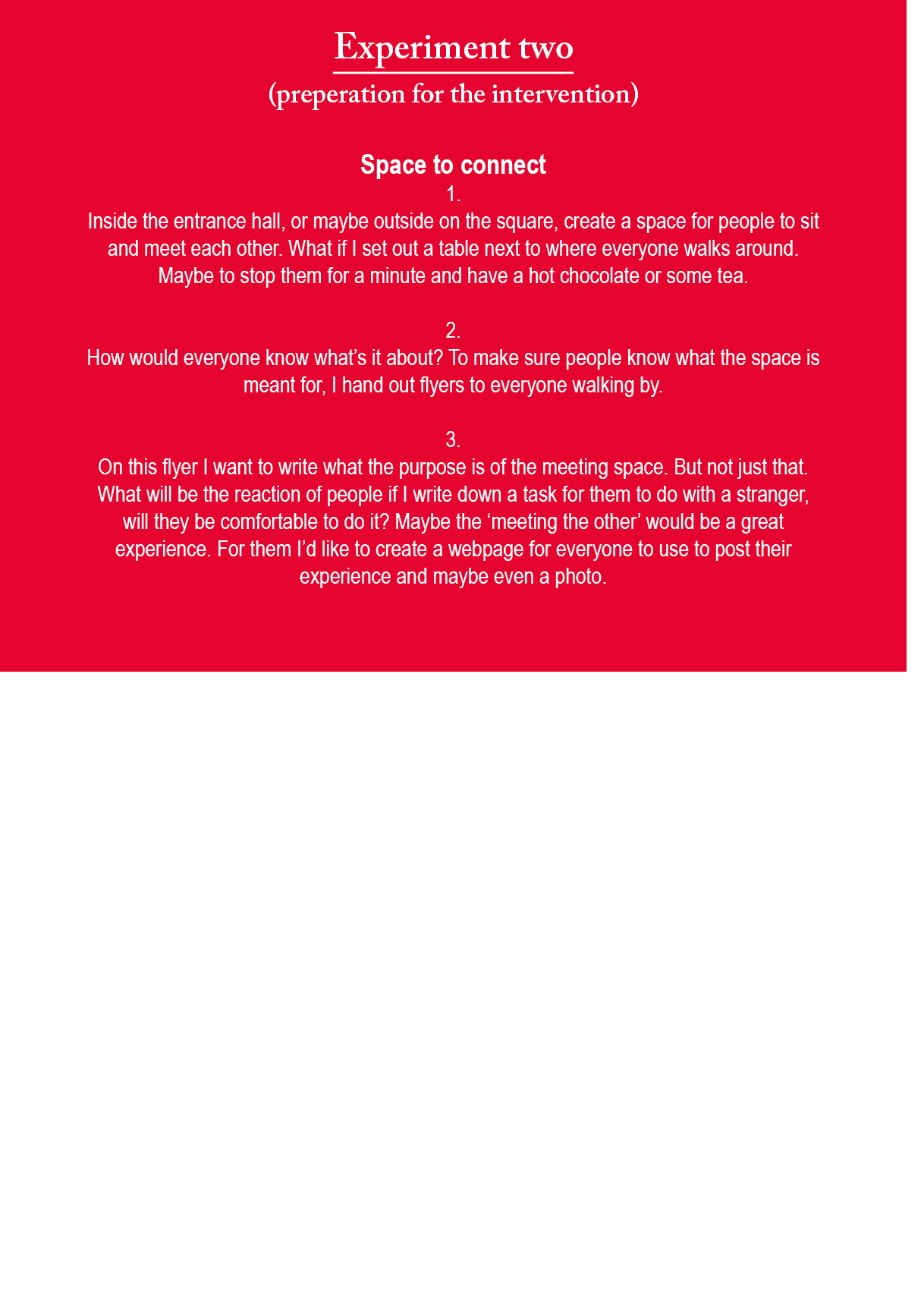
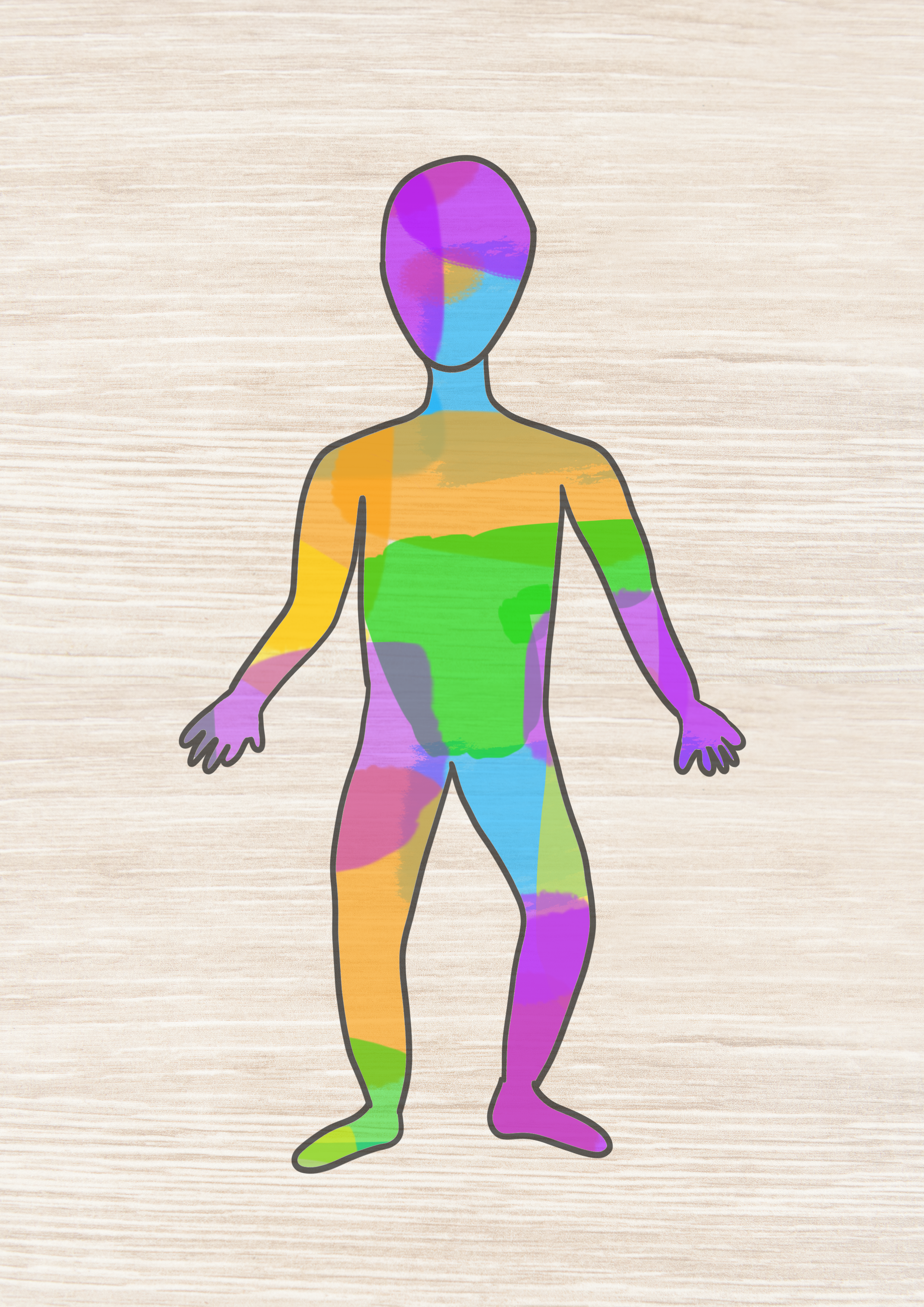
Mappings of the characters in the space
The every day visitors
Mapping the persons that use the central station. Out of the 120.000 travelers per day. Plus 50.000 passengers that don't go through the passage but do visit the station for other purpose than the train or the restaurant and shops.
purple: The student traveler
Blue: The office traveler
Orange: The tourist traveler
Green: The low budget traveler
Yellow: The family travelers


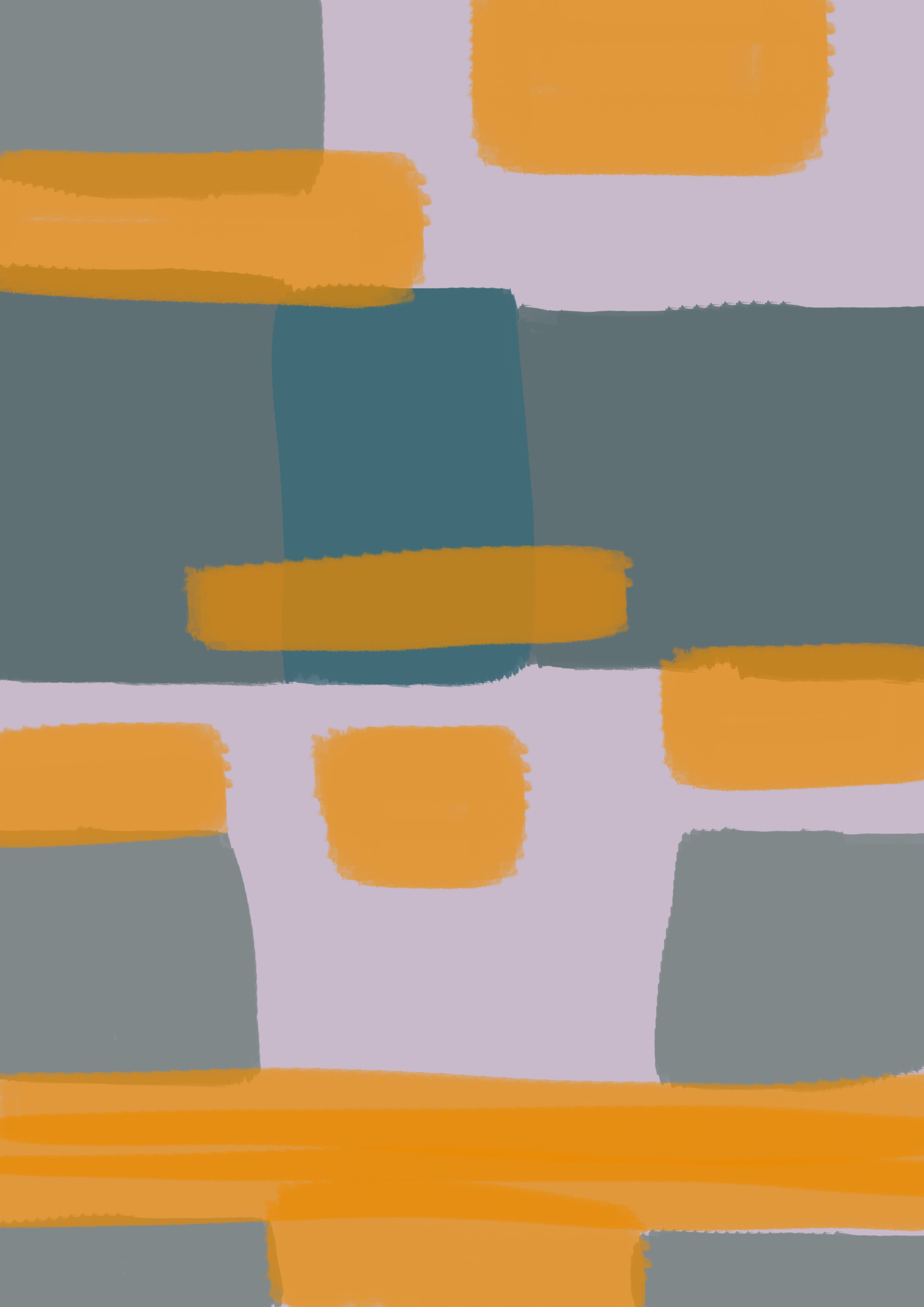
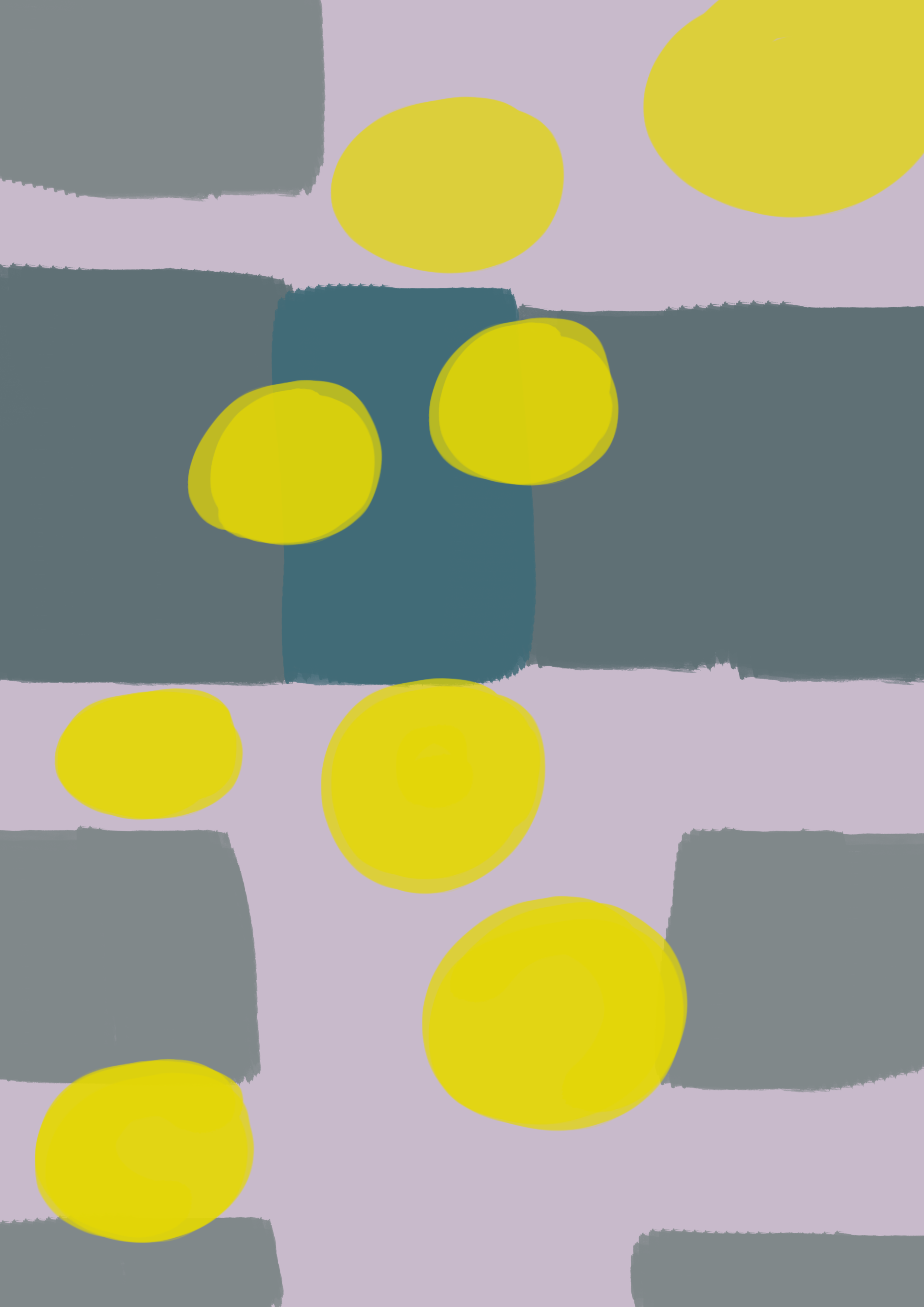
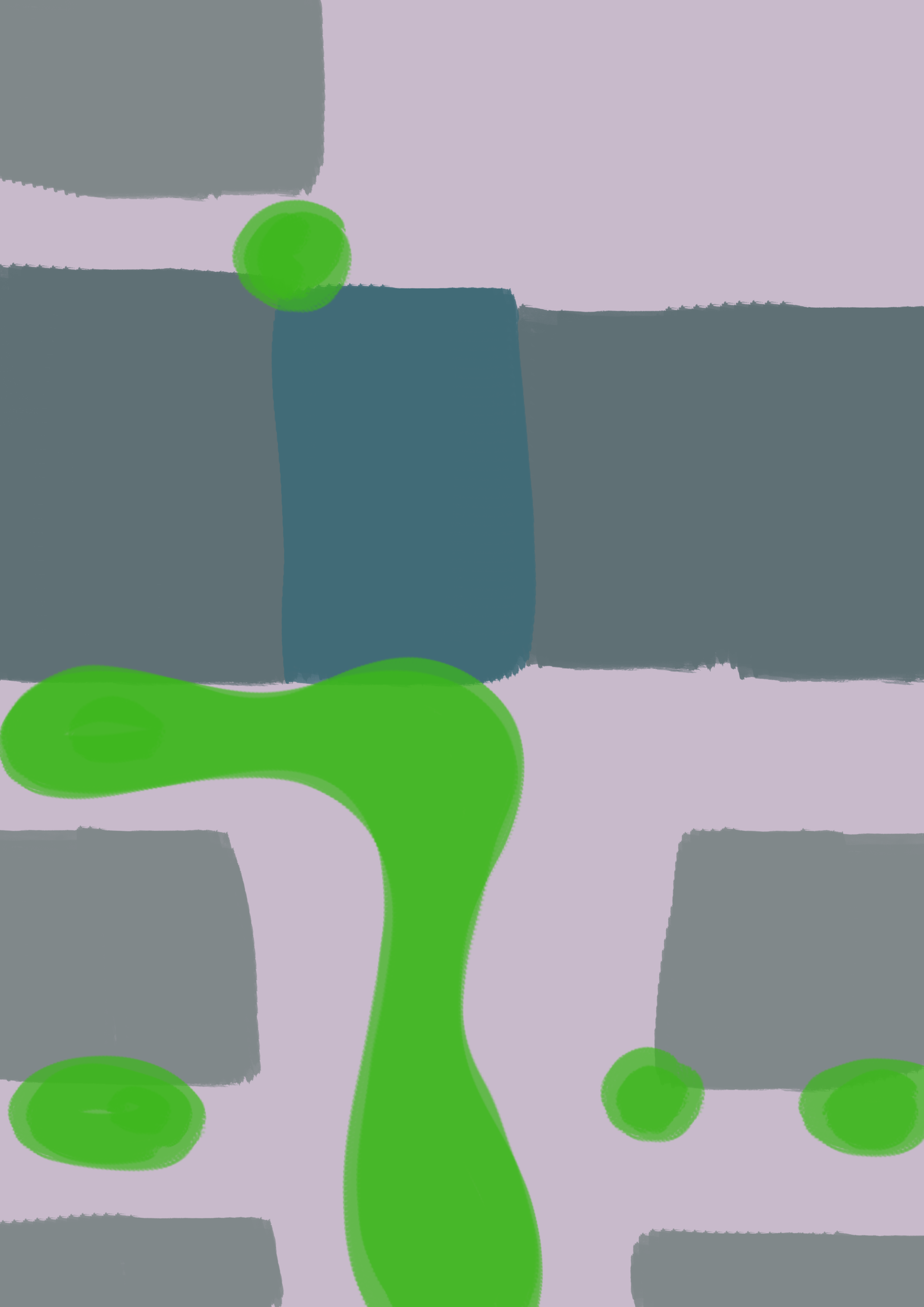
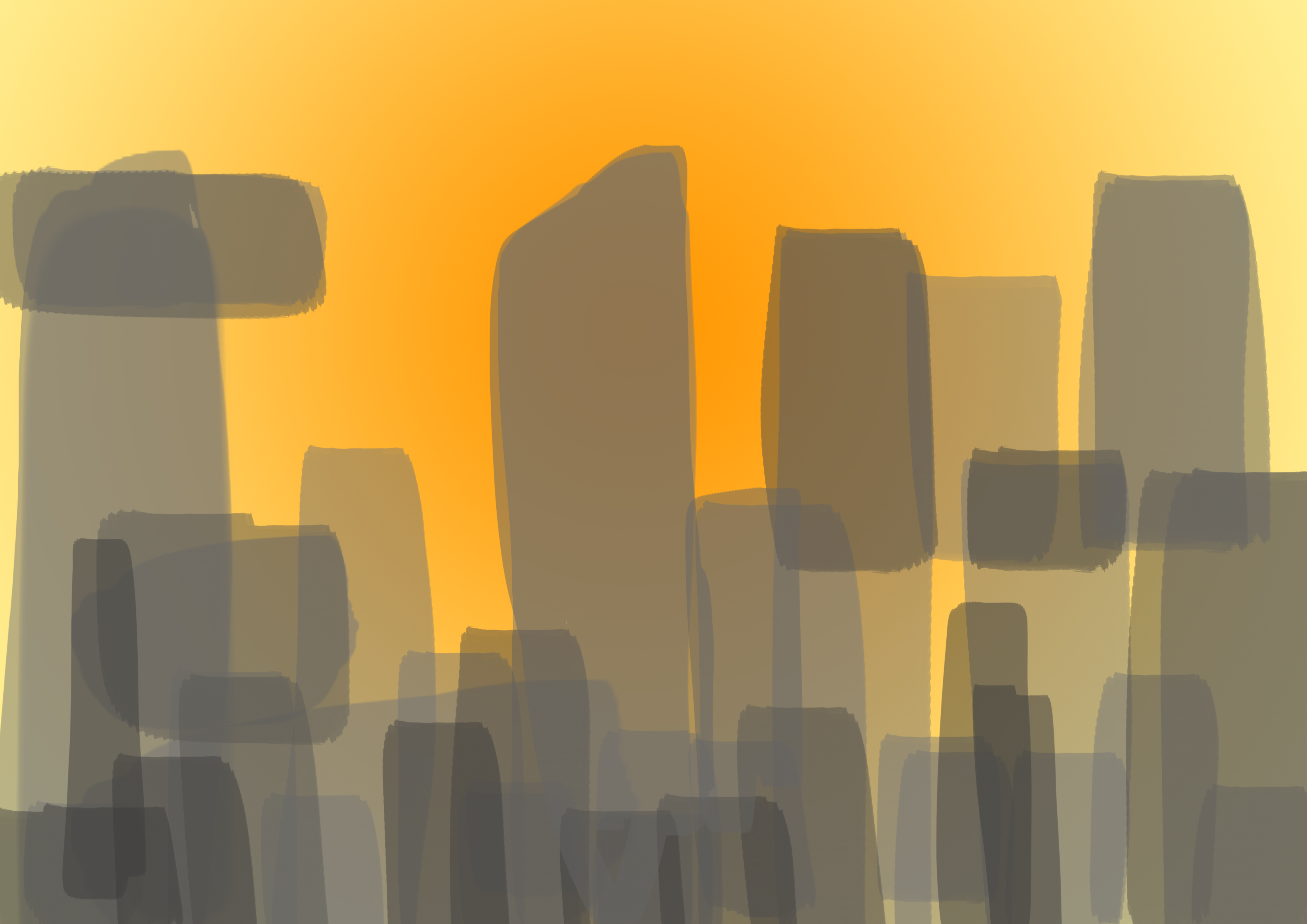
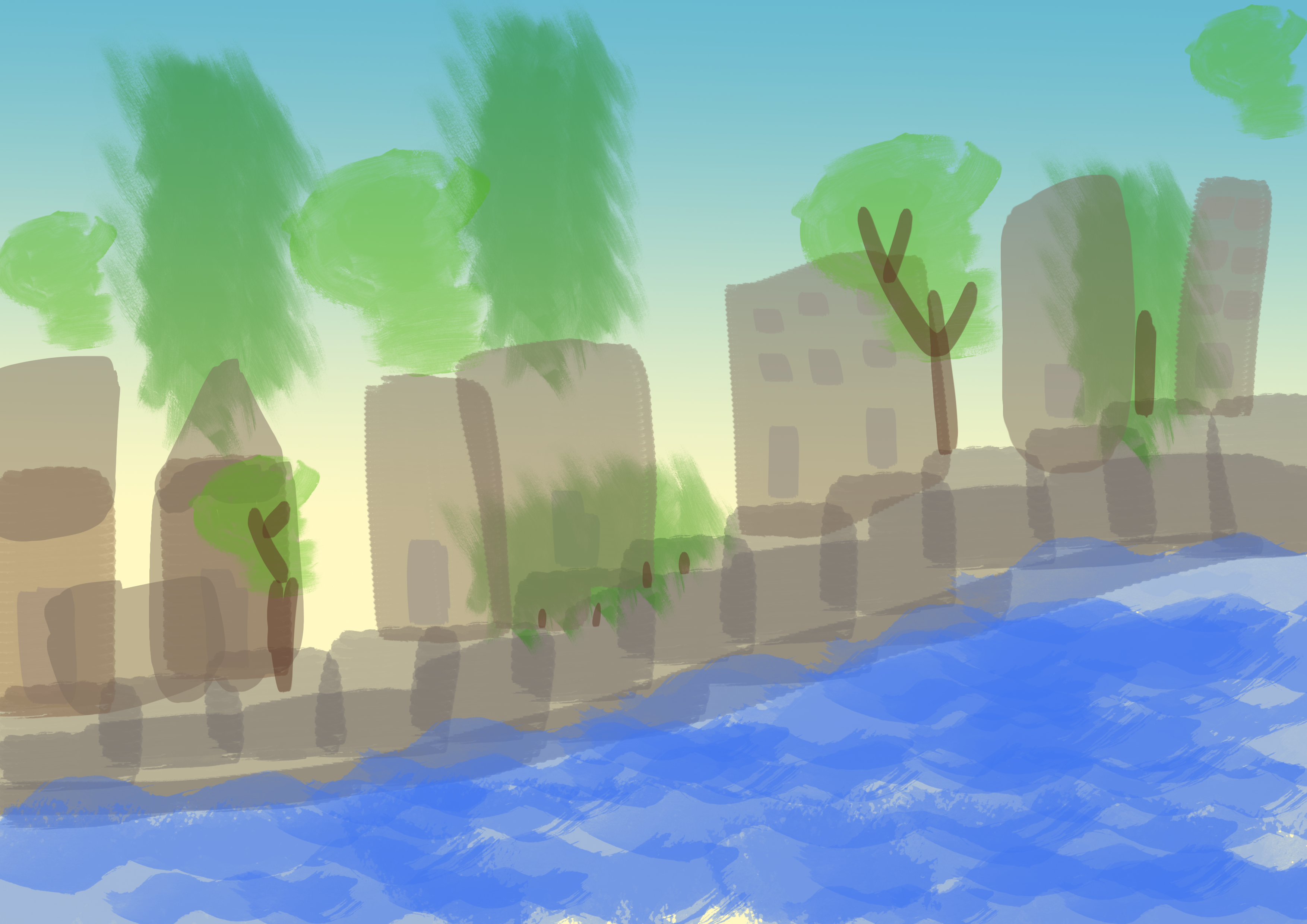
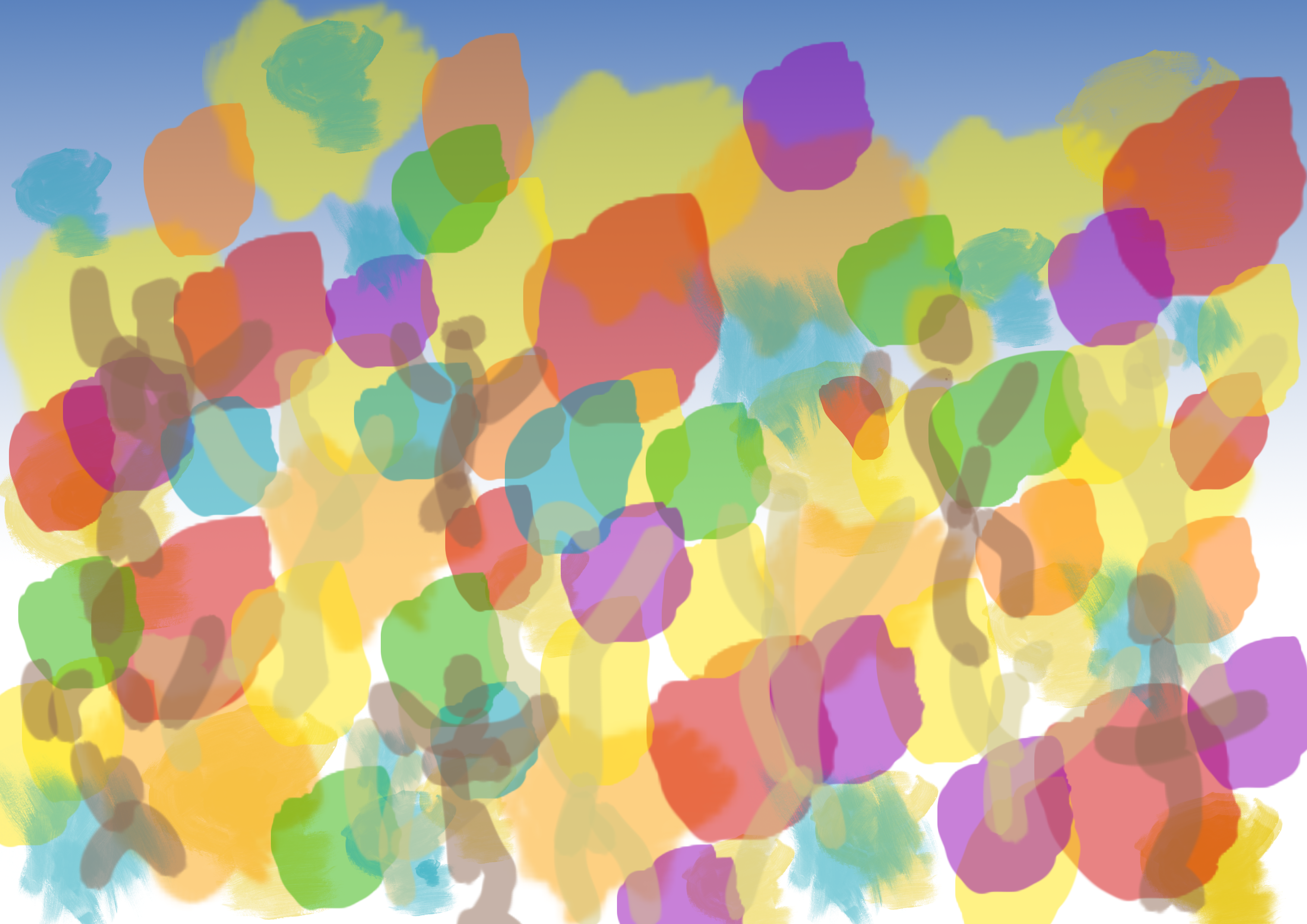
Most common things mentioned in the reviews:
-Many positive reviews about the efficiency of the place.
-Very safe environment as mentioned plenty of times.
-Some negative stories about the employees at the central station.
-Plenty of negativity about the system to get a ticket.
-Plenty of negativity about the minimum amount of money to enter the train station. This is not clear enough for people that are not farmiliar with the system.
-Not wheelchair friendly.
-A lot of tourists admire the central location and the architecture.
-Compared to train stations abroad this station is very well taken care of by staff to keep it clean, to keep the place safe.
Purple_the student traveller. Most likely these students do not live in this city. They study in the city moving from the centre area to the central station to take the train home.
Blue_A big amount of travelers move from the direction of the Weena and other parts of the centre. Where the offices are located. Because of the station's efficient location and train connection it is easy for those who live outside of the city but work at the big companies.
Orange_Tourists are easily recognizable carrying their luggage. Walking outside of the station after the train of Schiphol arrives. Or the platforms that connect with the Thalys and London train. As soon as they enter the city they take their time, look around. And try to find directions to their accomodation
Green_Low budget travelers move around the station connecting from the tram to the metro or the metro to the bus or the other direction. More use of the inner city connections.
Yellow_Families travel any kind of transport. It's a small group compared to the majority of the travelers (students, business workers, tourists).
Queer the space
Resit